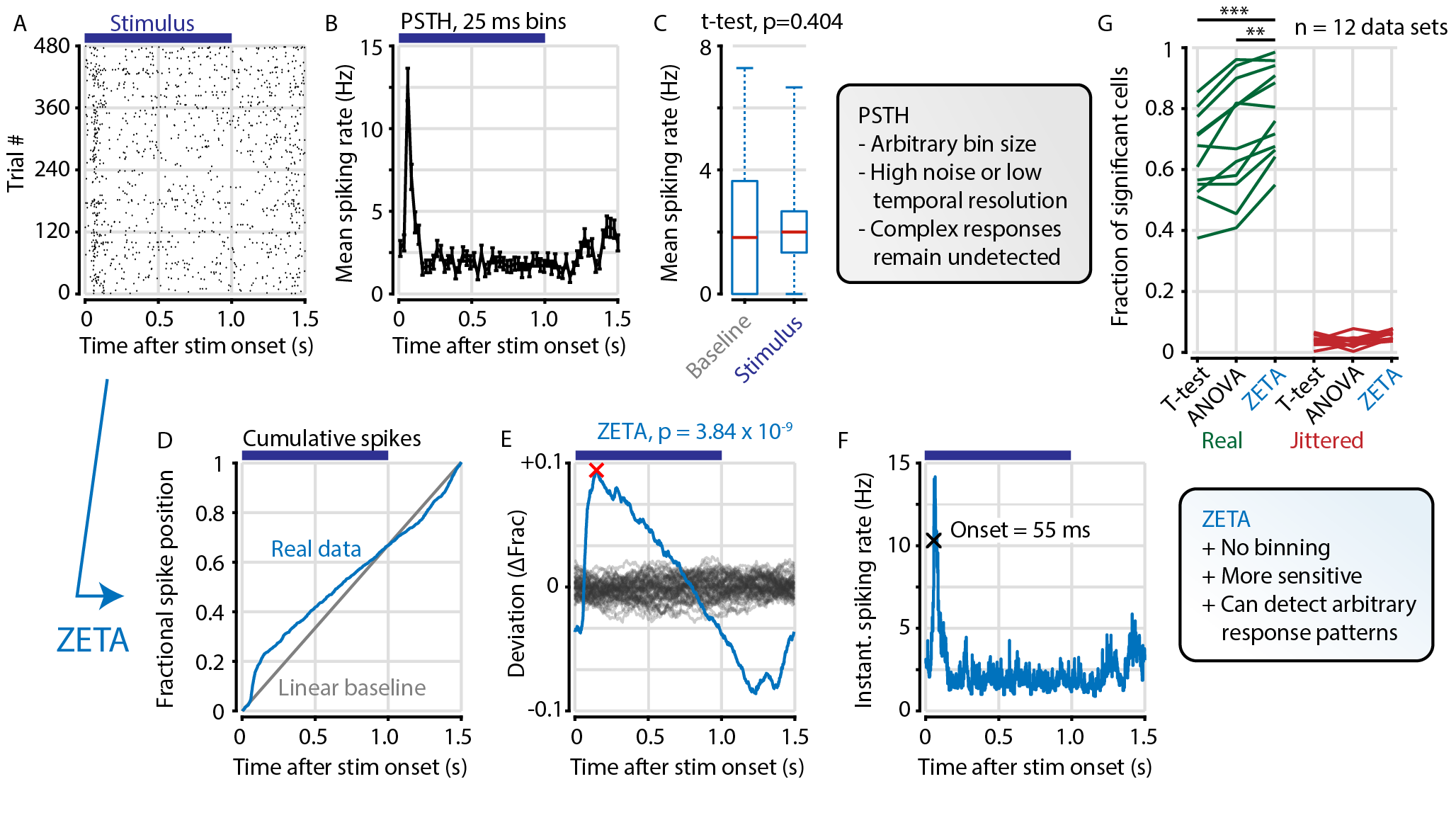A common procedure in pre-processing neural data is removing cells that are not responsive to an experimental stimulus. Many experimenters determine the ‘stimulus responsiveness’ of a cell by comparing its average spiking rate during the presentation and absence of a stimulus (see Figure 1A–C for an example V1 cell). This procedure will therefore remove neurons that show no response, but has the risk of also removing neurons that show a strong, but complex time-locked response to stimuli. To remedy this shortcoming, Montijn et al. (2021) developed a binning-free statistical test for determining whether a neuron shows any time-locked modulation, called the ZETA-test for Zenith of Event-based Time-locked Anomalies (Figure 1D–F).

The zeta-test has also been adapted to time series data and for two-sample comparison. The ZETA-test can be downloaded for MATLAB or python.
